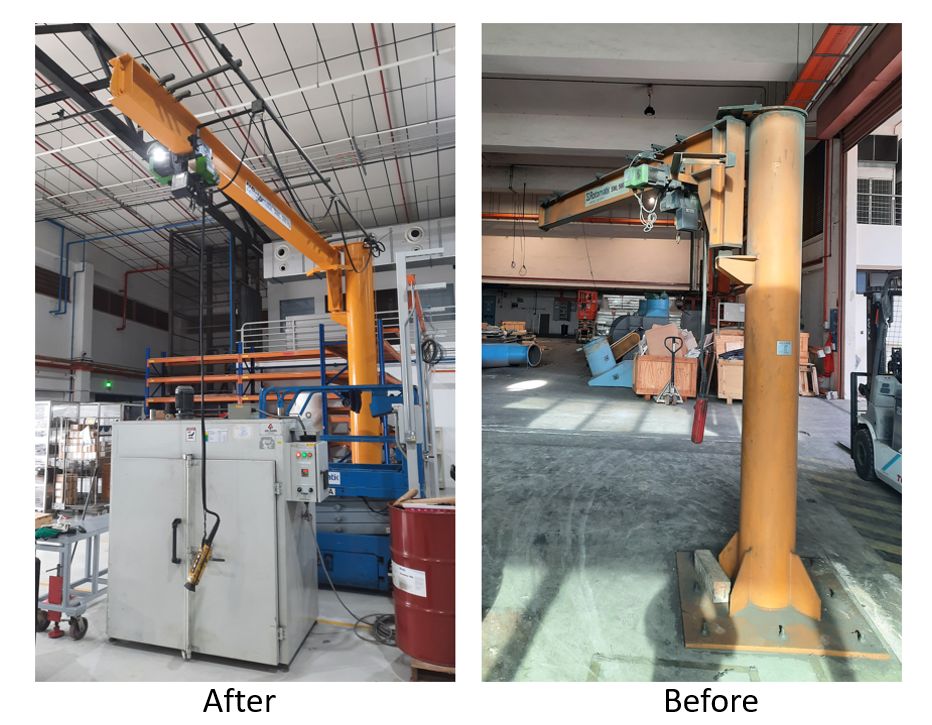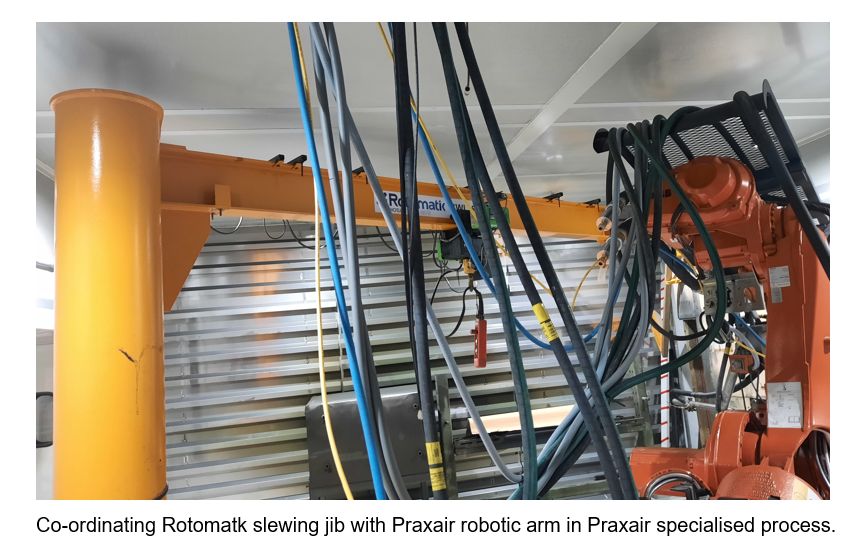The current market conditions provide the impetus for manufacturing facilities to adapt quickly. Only recently, overhead cranes seem to be the popular answer to lifting solutions. Another emerging trend is the rethinking of the utilisation of slewing jibs. While overhead cranes offer 3-dimensional material handling, versatility as well as wider area overage, not all lifting applications require overhead cranes. The one outstanding salient characteristic of slewing jibs is they are much more portable vis-à-vis overhead cranes. The relocation process of the latter is longer leading to increased downtime exacerbating operations and eventually supply chains disruptions.
The one outstanding salient characteristic of slewing jibs is they are much more portable vis-à-vis overhead cranes. The relocation process of the latter is longer leading to increased downtime exacerbating operations and eventually supply chains disruptions.
Slewing jibs are relatively much easier to dismantle, relocate and install without any major disruption to the shop floor and more importantly, manufacturing downtime is drastically reduced as opposed to overhead cranes.
Our key customer Praxair Surfaces Technologies Pte Ltd which provides coating services on components, mainly for oil and gas industries and aviation, needed to relocate their 6 units of Jib cranes from their former premises in Tuas to the new location in Changi. The project included the de-installing, cleaning, load testing and re-installing.
No parts were replaced during the process, demonstrating the durability of Rotomatik jib cranes. What Rotomatik did was to thoroughly clean the jib structures and components and repainted the jibs. We believe in saving the environment and costs by adopting the 3R (reuse, recycle, reduce) sustainability philosophy.
The entire process was conducted in 4 phases according to client’s schedule of shifting. The total time for the entire process was an amazing 12 days with an average of 2-3 days per jib. The entire operation was completed successfully by December last year.
We believe in offering a short lead time to get customer’s operations running swiftly.
